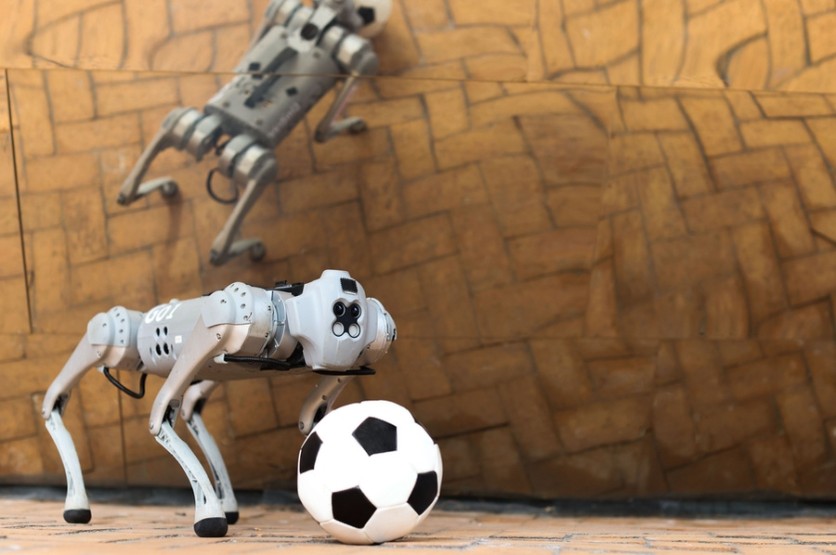MIT's Improbable Artificial Intelligence Lab, part of the Computer Science and Artificial Intelligence Laboratory (CSAIL), has developed a legged robotic system that can dribble a soccer ball under the same conditions as humans.
The robot is called "DribbleBot" and uses a mixture of onboard sensing and computing to traverse different natural terrains such as sand, gravel, mud, and snow and adapt to their varied impact on the ball's motion.

Simulating 4,000 Robots
The bot's development came from the need to automatically learn how to actuate the legs during dribbling to enable the discovery of hard-to-script skills for responding to diverse terrains like snow, gravel, sand, grass, and pavement.
A simulation was used, where a robot, ball, and terrain were loaded into a digital twin of the natural world.
Data collection was made possible by simulating 4,000 robots concurrently in real-time, which made it possible to collect data 4,000 times more quickly than with only one robot.
The robot starts out not knowing how to dribble the ball; instead, it only gets rewarded when it succeeds or punished when it fails.
"Once we've designed that reward, then it's practice time for the robot: In real-time, it's a couple of days, and in the simulator, hundreds of days. Over time it learns to get better and better at manipulating the soccer ball to match the desired velocity," MIT Ph.D. student Gabe Margolis said in a statement.
A recovery controller incorporated into the bot's system allowed it to traverse unknown terrain and get up after falling.
The robot can overcome out-of-distribution interruptions and terrains by using this controller to get back up after falling and switch back to its dribbling controller to continue pursuing the ball.
Giving Autonomy to the Robot
The aim of creating algorithms for legged robots, according to MIT researcher Pulkit Agrawal, is to give autonomy in difficult and complex terrains that are now out of the grasp of robotic systems.
DribbleBot's mobility and the types of terrain it may travel across are more limited when dribbling a soccer ball than when it is walking by itself. How the ball and environment interact may differ from how the robot and environment interact.
The robot's hardware consists of four legs that allow it to move across a variety of surfaces, a computer that executes its algorithms, and a set of sensors that will enable it to understand its surroundings.
The legs can also apply forces that cause the ball to dribble. The robot's architecture enables it to accomplish jobs that conventional wheeled robots cannot, such as traversing uneven terrain.
The Canadian academic Alan Mackworth's 1992 paper "On Seeing Robots," which mentioned the concept of robot quadrupeds and soccer, was the project's primary source of inspiration. The Robot J-League was introduced a year later, which sparked global enthusiasm for the "RoboCup."
Related Article : MIT Researchers Create Automated Design System that Seeks Human Feedback

![Apple Watch Series 10 [GPS 42mm]](https://d.techtimes.com/en/full/453899/apple-watch-series-10-gps-42mm.jpg?w=184&h=103&f=9fb3c2ea2db928c663d1d2eadbcb3e52)



